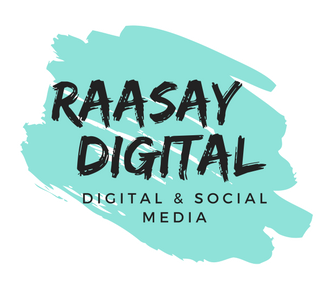The Supreme Court has never made it clear whether the federal government has the power to declare martial law and, if so, whether the president can unilaterally proclaim it or whether it would require congressional approval. The 1952 Supreme Court decision in Youngstown Sheet & Tube Company v. Sawyer provides a framework for analyzing the exercise of executive power — and would likely be used by a court to determine whether a president`s declaration of martial law has exceeded executive power. Two theories of martial law are reflected in Supreme Court decisions. The first, which emerges from the Law Petition of 1628, provides that customary law knows nothing similar to martial law;223 that is, martial law is not determined by official authority of any kind, but derives from the nature of things, since it is the law of the greatest necessity and the civil courts are the last judges of necessity.224 According to the second theory, Martial law can be served by the supreme political authority in time of war, valid and constitutionally imposed. In the early years of the Supreme Court, the U.S. judiciary adopted the latter theory, as described in Luther v. Borden225 that the state`s statements on martial law were conclusive and therefore not subject to judicial review.226 In this case, the Court found that the Rhode Island legislature had the right to use the rights and practices of war in the fight against the uprisings in that state. Although the decision in the prix227 cases did not directly concern the issue of martial law, in 1863 it gave national scope to the same general principle.
In 1934, California Governor Frank Merriam placed the San Francisco docks under martial law, citing “riots and unrest” resulting from a dockers` strike. The governor threatened to put the entire city under martial law. The National Guard was called in to open the docks, and a city-wide martial law facility was averted as goods began to pour in. Guards were empowered to make arrests and then bring prisoners to justice or extradite them to court. State enforcement of martial law continued into the 20th century, peaking in the 1930s – a decade in which the blatant abuse of that power by governors also increased. In 1933, for example, Georgia Governor Eugene Talmadge declared martial law “in and around” the State Highway Board`s headquarters as part of a plan to expel some of the council commissioners he could not legally expel. This “Highway Department Coup” was finally crowned with success. Remarkably, Talmadge`s successor, Governor Eurith Rivers, tried to do the same in 1939, but his attempt failed. footnote26_qeb6o9g 26 “National Affairs: Martial Law,” Time, July 3, 1933, content.time.com/time/magazine/article/0,9171,745726,00.html; and Miller v. Rivers, 31 F.
Supp. 540 (M.D. Ga. 1940), rev`d as moot, 112 F.2d 439 (5. Cir. During World War II, President José P. Laurel placed the Philippines (then a vassal state of Imperial Japan) under martial law By Proclamation No. 29 of September 21, 1944, and promulgated it the next day at 9:00 a.m.m. PST. Proclamation No. 30 was issued on September 23, declaring the existence of a state of war between the Philippines and the United States and the United Kingdom with effect from 10:00 a.m.m that day.
The Court concluded that since these principles are deeply rooted in U.S. laws and institutions, any law that purports to shorten them must be clear and precise on how to reduce them. For example, a law could explicitly authorize the use of military courts to bring civilians to justice in areas where an invasion has led to the closure of courts and where the government has declared martial law. If this specificity is absent – if the law or its legislative history does not define what Congress meant by martial law – then the courts will assume that Congress only intended to authorize the military to “act vigorously for the maintenance of an orderly civilian government and for the defense of the [territory] against an actual or imminent rebellion or invasion, footnote9_rgg9j99 9 Duncan, 327 U.S. to 324. But nothing about Hawaii was normal in 1942. It has been under martial law since the Japanese attack on Pearl Harbor in December 1941. footnote2_0yaj4bo 2 Although Hawaii was an incorporated territory and not a state in 1942, the Supreme Court held that the Constitution was fully applicable there and that the legality of martial law should be analyzed as if it were a state. Duncan, 327 U.S. to 319. Its courts were closed and replaced by military courts.
The rules of daily life were not set by an elected legislature, but by the military governor. The military controlled all aspects of life on the islands, from criminal justice to parking areas to roadside garbage disposal. footnote3_p39labe 3 Harry N. Scheiber and Jane L. Scheiber, Bayonets in Paradise: Martial Law in Hawaii during World War II (Honolulu: University of Hawai`i Press, 2016). Martial law can be used by governments to enforce their dominance over the public, as seen in several countries listed below. Such incidents can occur after a coup (Thailand in 2006 and 2014 and Egypt in 2013); when threatened by popular protests (China, 1989 Tiananmen Square protests); Repression of political opposition (martial law in Poland 1981); or to stabilize perceived uprisings or uprisings (Canada, the October 1970 crisis). In the event of major natural disasters, martial law may be declared; However, most countries use a different legal construct, e.B the state of emergency.
No existing federal law explicitly authorizes the president to declare martial law. footnote1_d1jsgft 1 Two federal statutes (48 U.S.C § 1422, 1591) authorize the territorial governors of Guam and the U.S. Virgin Islands to declare martial law in certain circumstances. .
